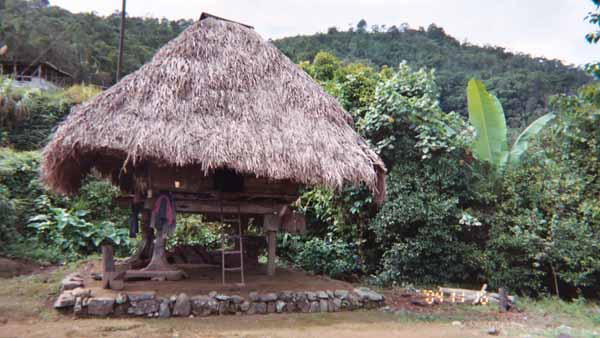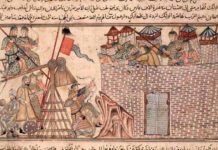The Indians when they learned to navigate by water began to spread their cultural influence throughout Early South East Asia.
The first civilizations that Indian ships encountered were villages along the Malaysian border. Malay villages existed close to the sea on creeks or estuaries. These people were good astronomers and made tools with hard, polished stone.
They were great navigators, and had long narrow sailing crafts that were graceful in design. The Indians met them first because they could only go where the wind took them at first due to technological boundaries and from June to November a South-West wind blew constantly, leading the ships onto the Mayan Peninsula.
South East Asian Villages
Indians who were more developed than the village culture had a chance to spread their culture to these South East Asian villages that had complex patterns of relationships that had lasted for thousands of years. Due to wind factors, the Indian sailors were often stranded on the peninsula until the North East winds started blowing again from December to May.
Eventually because of this Indian culture spread eastward as far as Vietnam. These Indian priest-missionaries and merchants provided leaders with an already tried and proven method for them to rule over normal people like wet rice fishermen and fishermen.
Indianized States
An Indianized state is evidenced first of all by a third century Chinese description. The state Funan in south Vietnam was on the trade route from India to China, being situated in the great delta of the Mekong River. Its capital Vyadhapura was a mud walled city that contained mainly pirates who would take advantage of ships moored along the mangrove creeks.
It was of a relatively large size, supposedly populated by dark curly-haired people who exported jewelry of wrought silver and gold, pearls and sandalwood.
Religiously the Indians could only gloss over the Animist religions that existed in South East Asian villages. For example, in Thailand where Buddhism is widespread there still exist many Animist traditions. Loosely organized states started to grow at the river mouths, who belonged to the relevant ruler as did tax revenues coming from there.
Pirate alliances often would make victims out of passing merchant shipping. On the plainlands the rich soil would be used to grow rice. A stable social framework grew out of this that was ethical and hierarchical.
The Ifugao
The Ifugao for example terraced large areas of mountains for rice growing, perhaps to run from malaria or perhaps because of a spiritual reason, (the terraces almost acted like pyramids to them). The terraces themselves if put back to back could extend for 12,000 miles. Terraces were built of excavated land next to a stone wall of 50 feet. The trench was filled with impervious clay, then sand and soil. Furthermore, the water supply system were made of bamboo pipes that led the water from the waterfalls of the hills to the rice fields.
Families would need to cooperate when using this system of growing the seedbeds and transplanting the young plants. Joint responsibility was important as all should contribute in the group. For example, if a house ruined then neighbours would help build another or if someone was ill they would be taken care of by their neighbours.
This led to close bonds throughout the entire village. This is in direct opposite to the thinking in the city where survival is always a personal affair. Worship of gods who were behind the forces that made rice growing possible were often worshipped in the Animist way. Mae Phra Phosop is a goddess rice mother who will be offended if you do not eat all the rice in your bowl for example and can stop rains needed for the next planting.
Reference
- A Short History of Asia, Colin Mason, Palgrave, London, 2005








